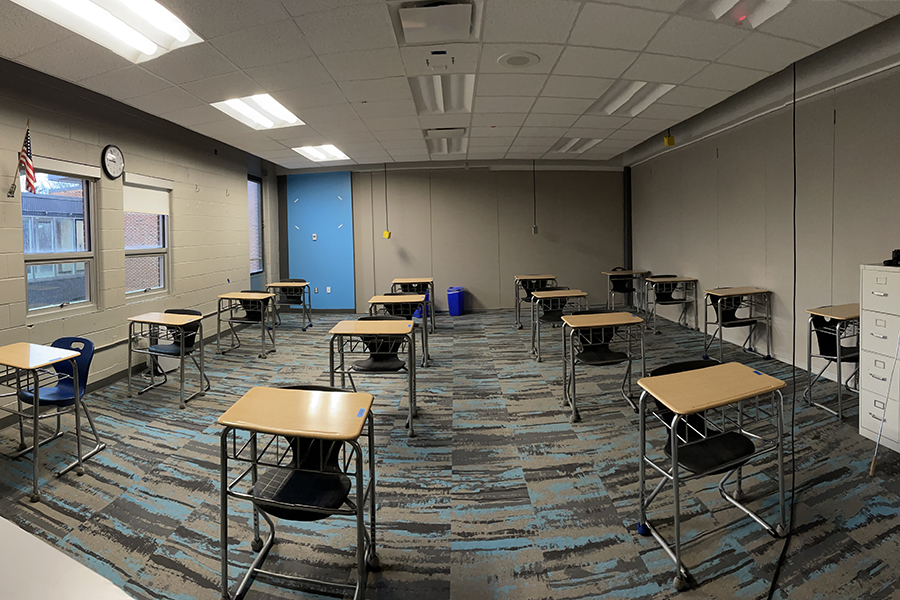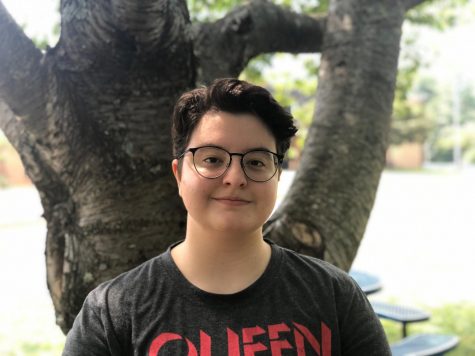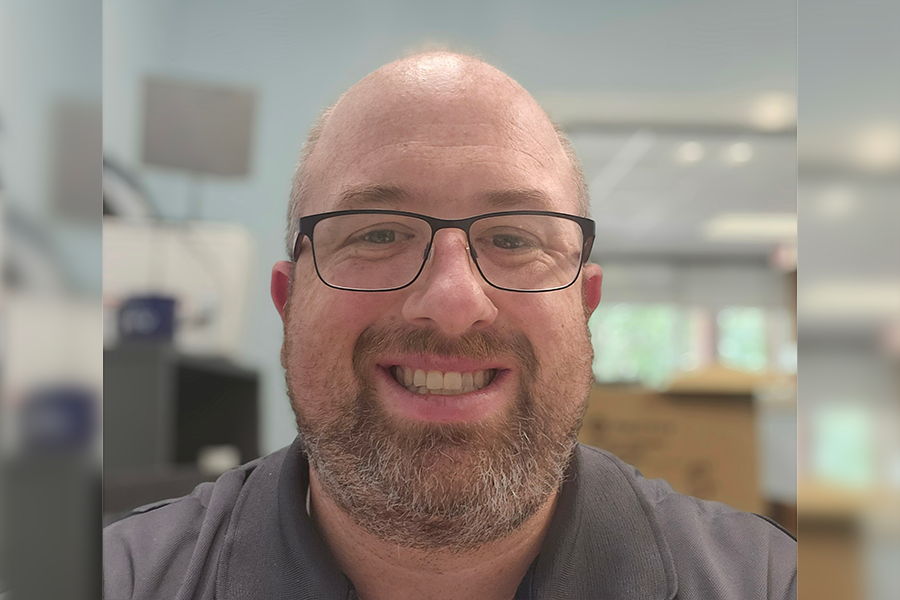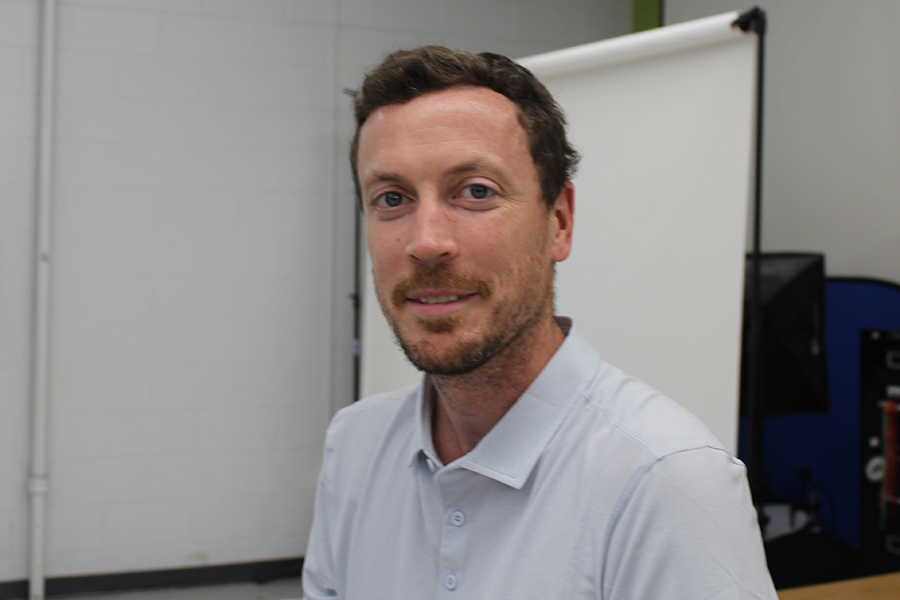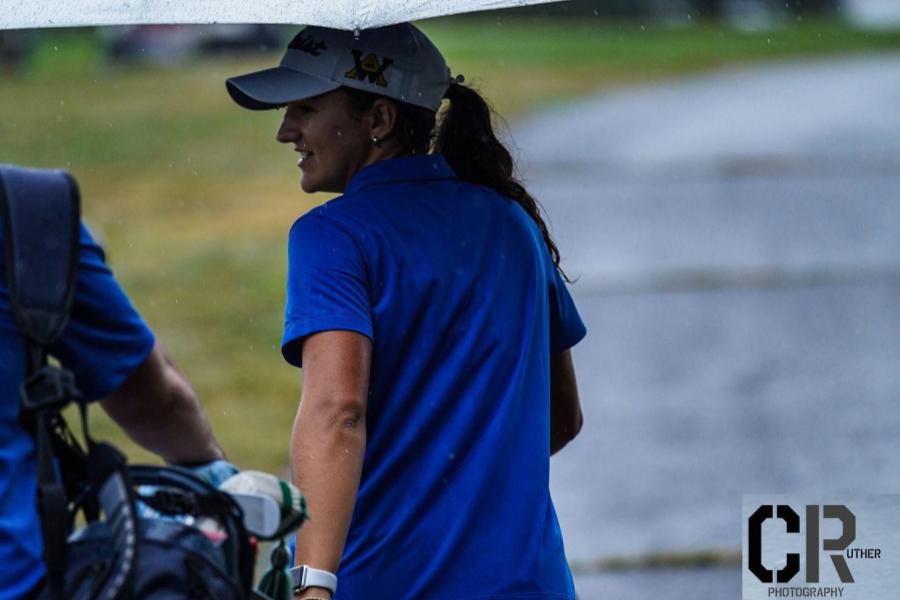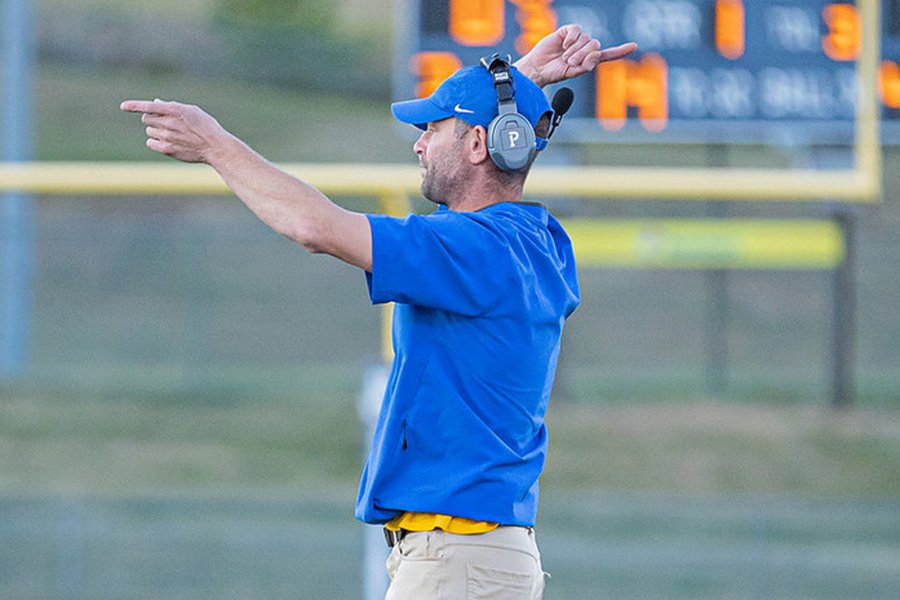Teachers Adapt to New Circumstances Due to COVID-19
Credit: Maxwell Creager-Roberts
Mr. Grimes’ history classroom, ready for hybrid instruction.
February 28, 2021
The closing of schools and the rapid change to virtual learning has resulted in teachers having to quickly reevaluate their courses and adjust their teaching methods, in order to better sustain a functional virtual-learning environment.
For some teachers, this meant aligning their schedules and curriculum with other teachers of the same subject, which in previous years has not happened. Ms. Streit, an English teacher, said, “We really felt that any differences between teachers were going to be magnified in virtual school… So, we did it, we approached it as a team effort.”
Ms. Karpovich, a chemistry teacher, explained how some departments, including the WAHS science department, are collaborating with other ACPS schools in order to align the schedules to ensure that every student was getting the same content at the same time. This was not just for the students’ benefit, but also for the teachers’ benefit as well.
“If a teacher was unable to teach for a period of time,” Ms. Karpovich said, “another teacher could step up and teach for them because we are all teaching the same thing at relatively the same time.”
Another challenge that teachers faced was choosing which materials to prioritize. Ms. Streit had to limit the time she spent on each subject considerably to ensure that she was able to teach everything she wanted and needed to cover in the semester.
“Hamilton, which took me two weeks in the classroom, was reduced down to two days… we had to do it in order to move you through the timeline and get you guys to where we wanted to be at the end of the semester,” Ms. Streit said.
Ms. Akers, a 9th grade English teacher tied to Global Studies, which serves as the combination of English and History, decided to cut the curriculum based on what she believed wouldn’t be as instructional without the courses being taught simultaneously.
“Since I couldn’t do history at the same time, it was too big of an undertaking on my own, I had to cut some more of the global lit that I really loved,” Ms. Akers said.
Mr. Grimes, also a Global Studies teacher, also expressed his frustration on cutting material. “That has been probably the hardest thing. Some of the topics I’m most passionate about I’ve had to cut out [of the curriculum].”
Because of the shortened school year and virtual environment, many of the amusing activities including group projects and more hands-on activities that teachers had previously planned have needed to be reconsidered or eliminated.
Mrs. Bendick, a 10th grade English and AP Literature and Composition teacher, also expressed similar sentiments. “The 4×4 has been one of the biggest challenges to continuing online what I normally do in the classroom. For my AP classes, I chose works that I felt would best prepare students for the AP exam, which is not the way I usually prioritize things. Given the single-semester preparation, I had to be sure we were getting the most bang for the buck, as it were.”
Another challenge teachers have been facing is limited student engagement and difficulty when attempting to form personal connections. Many teachers have acknowledged the fact that they aren’t even aware of what some of their students look like.
“I barely know what some of my students look like, it’s harder to get them to work with me,” Mr. Grimes said. “It’s still a challenge to really communicate my energy and like my enthusiasm and the importance of the topics through a camera.”
Similarly, Ms. Larson said, “My biggest fear is that I won’t recognize one of my students at the grocery store… I taught them for an entire semester and I just won’t be able to say hello because I wont recognize them.”
“The vast majority of my students don’t turn on their cameras, and to be honest, it’s awful,” Mrs. Bendick said. “As a teacher, I am constantly ‘reading’ my class — seeing who’s getting it, who’s engaged, paying attention, keeping up, etc. and the online format has made that impossible. I’ve had to ask for a lot more work than I usually do because that’s the only way I can gauge comprehension.”
The personal connections that teachers and students have been missing out on will hopefully improve with the transition to hybrid learning in Stage 4, which will begin in March. However there are a lot of different reactions and concerns regarding this transition.
“I think that hybrid at the jump start is gonna feel overwhelming and unsustainable,” Ms. Akers said, “but then we’re going to get over the learning curve and get over the bumps in the road.”
All teachers have used this year as a learning experience, and most say that they are becoming better teachers because of it. Overall, teachers are itching to get back to school in a safe and efficient way, which is something that both students and teachers have in common.
Marja Barrett, Sephira Ainsworth, and Abigail Connelly contributed to this story.



